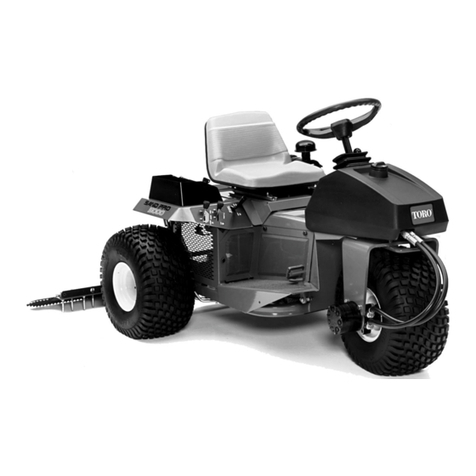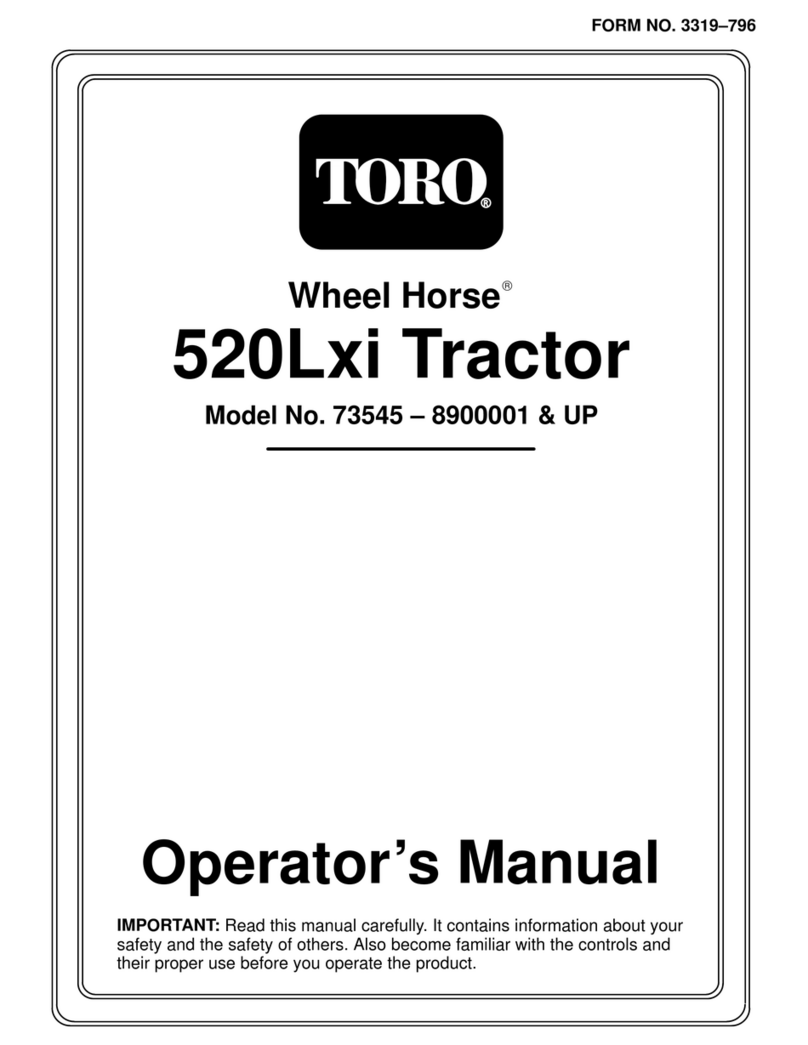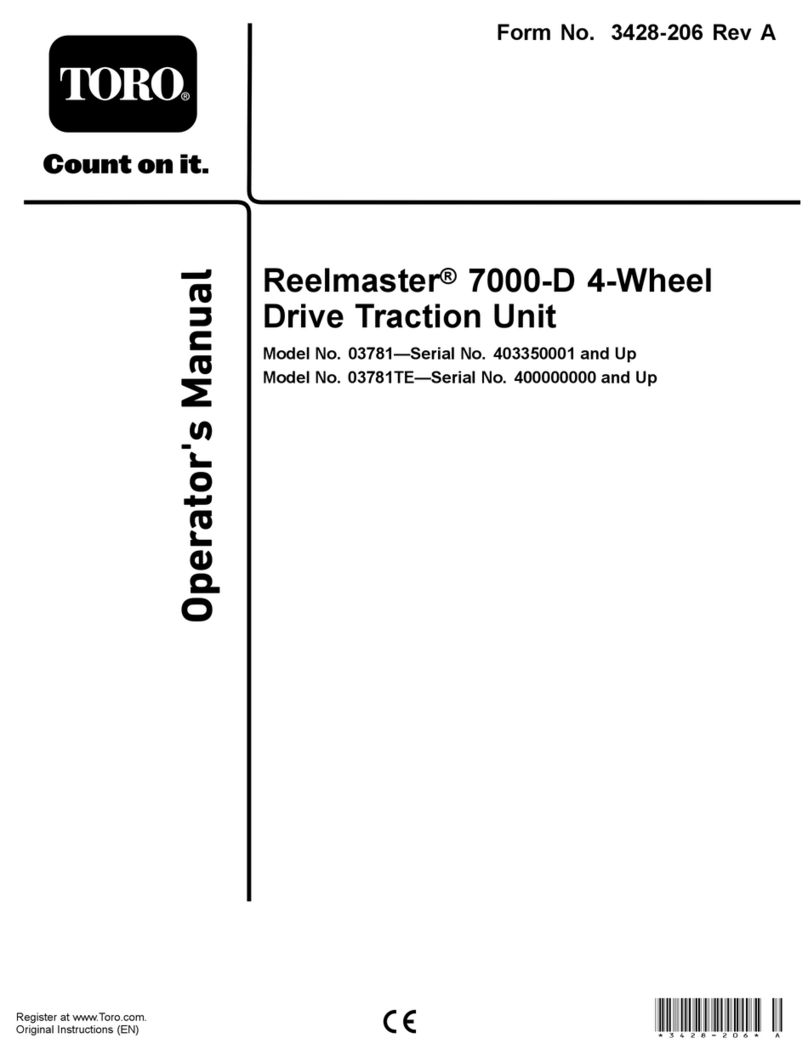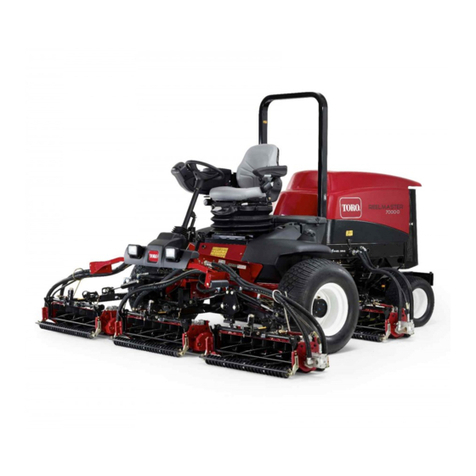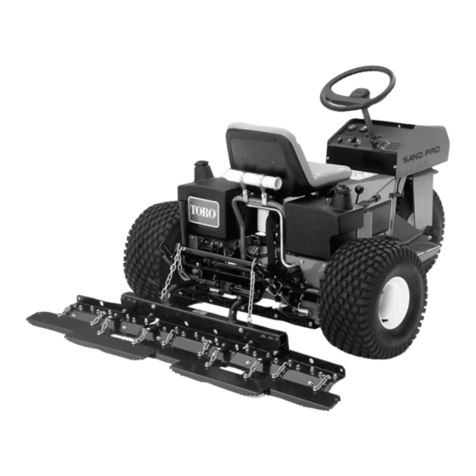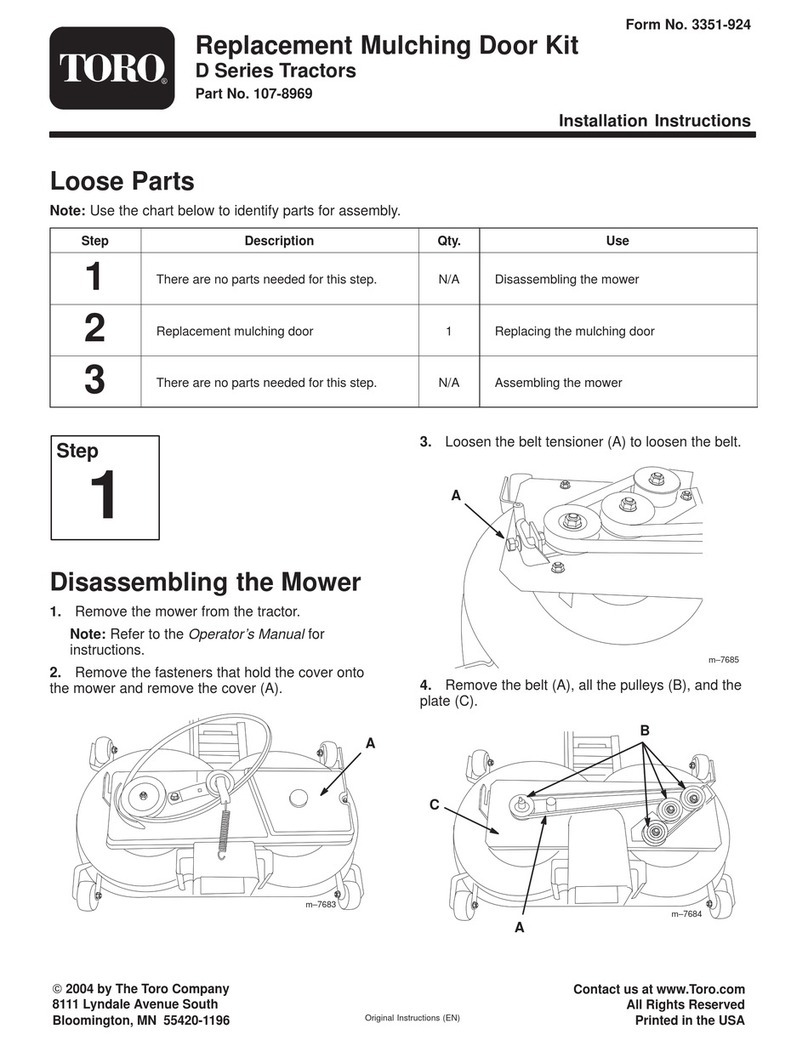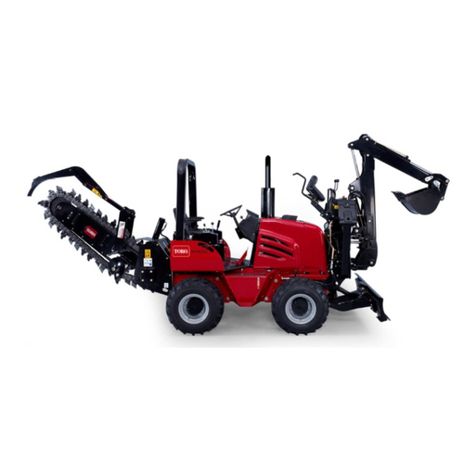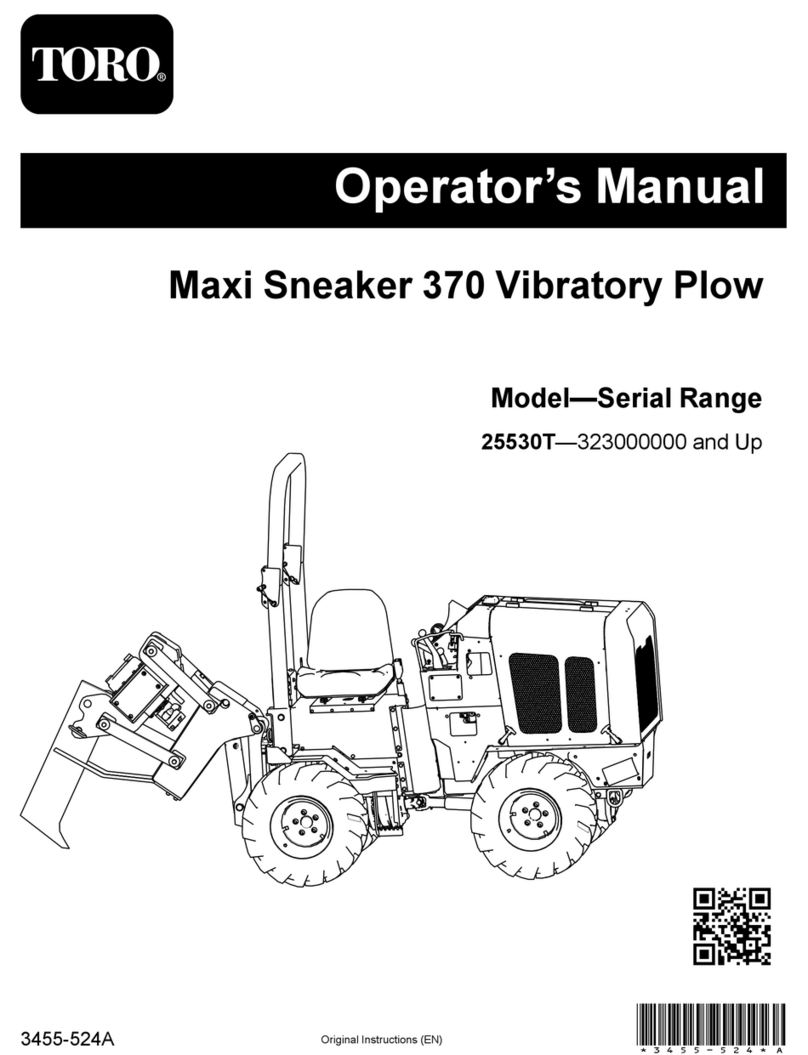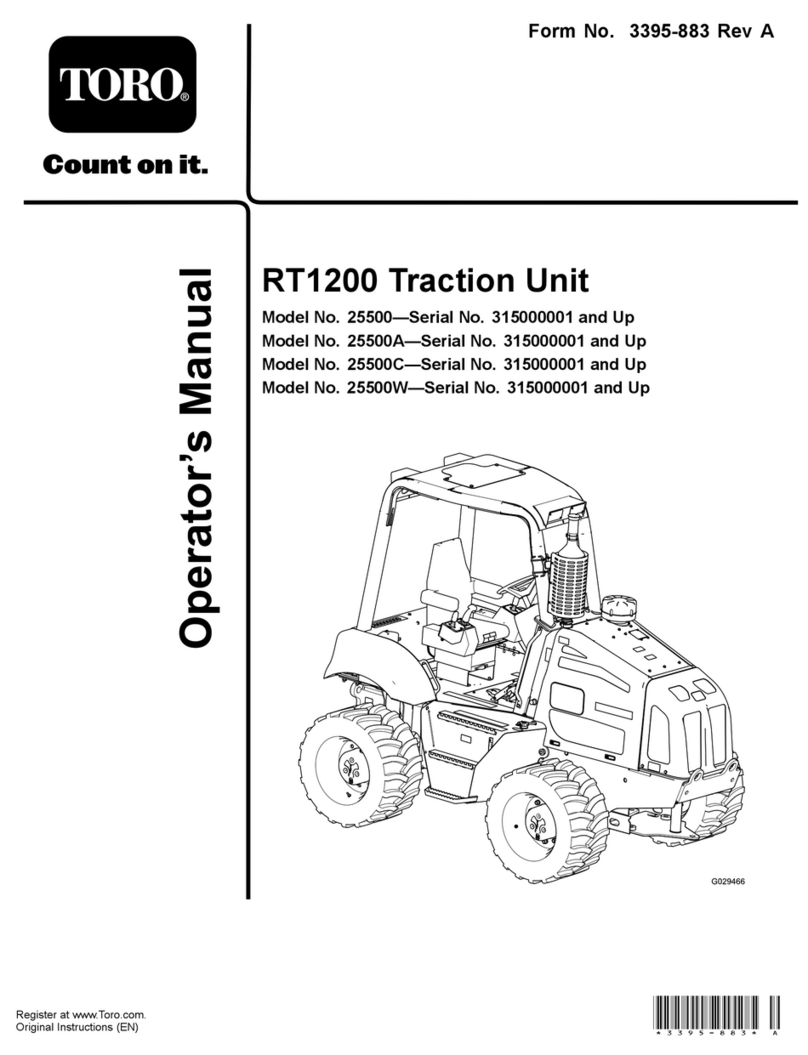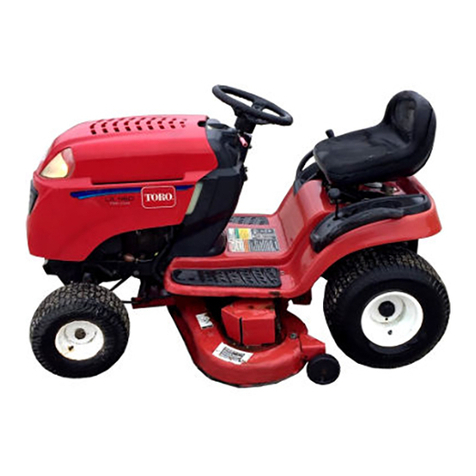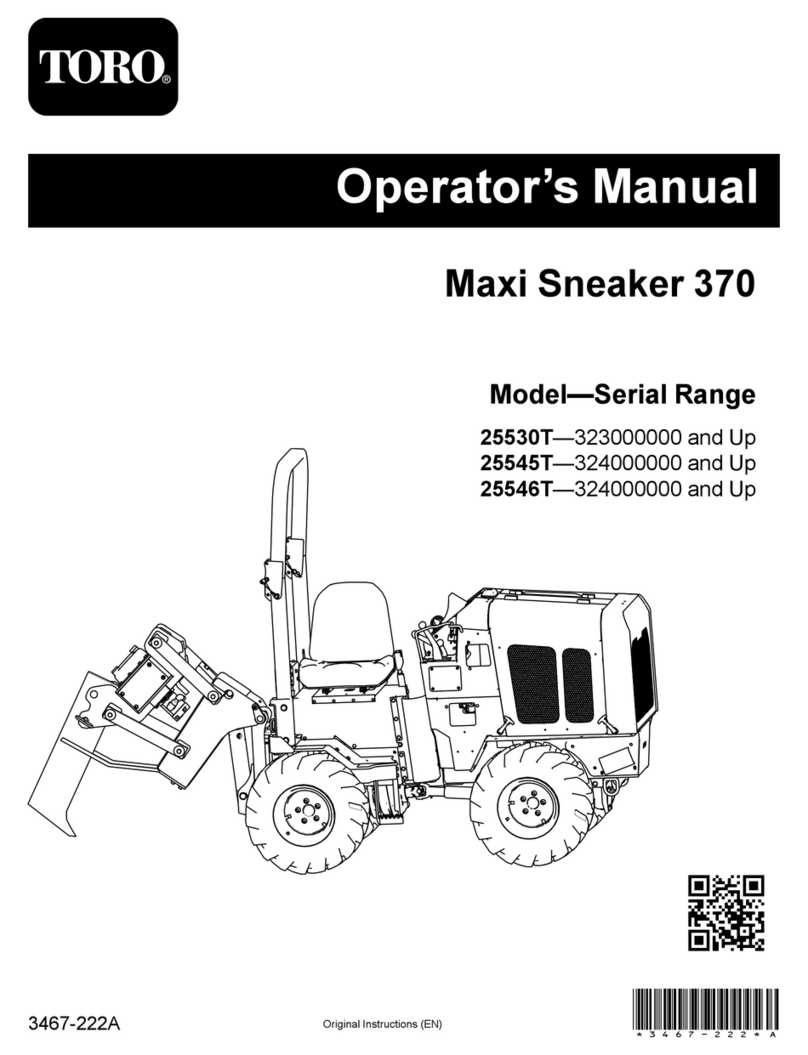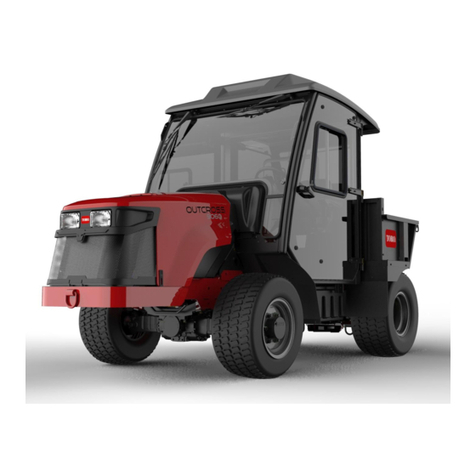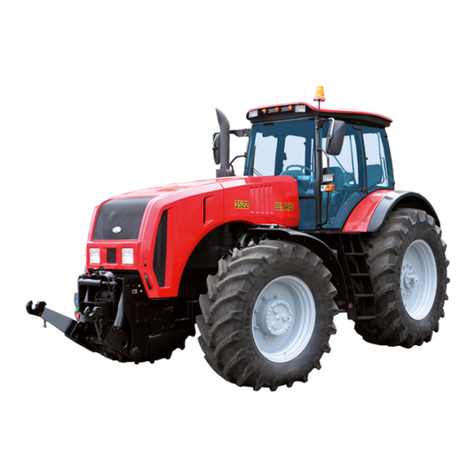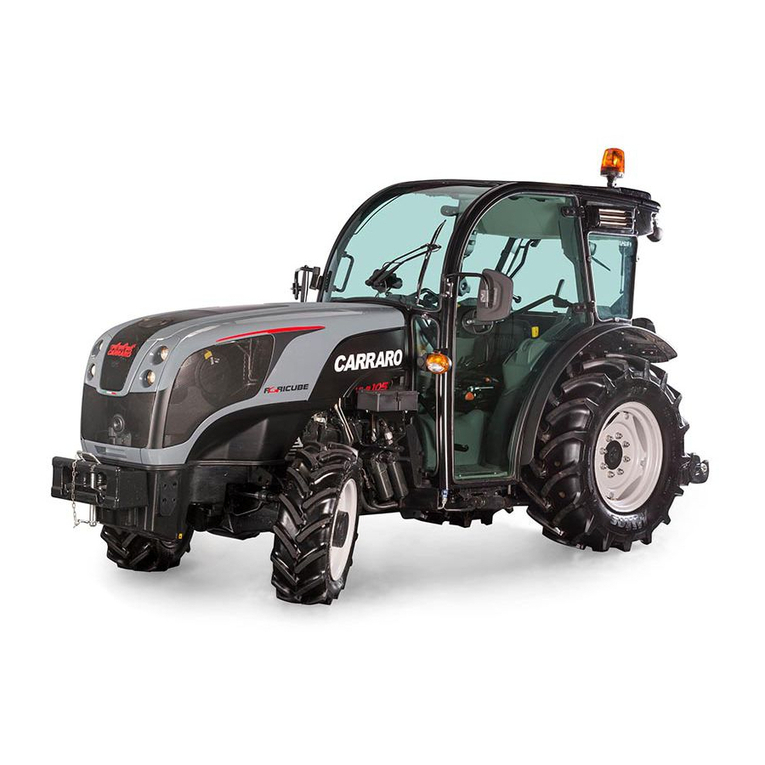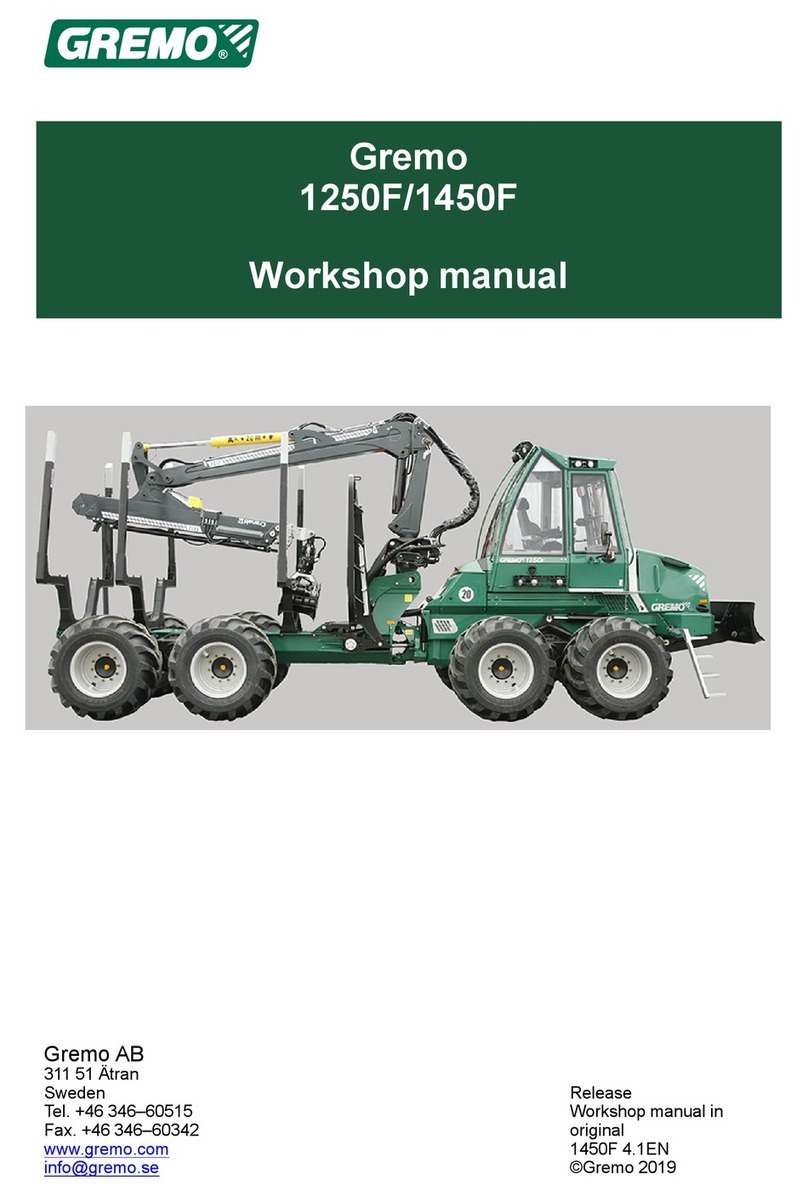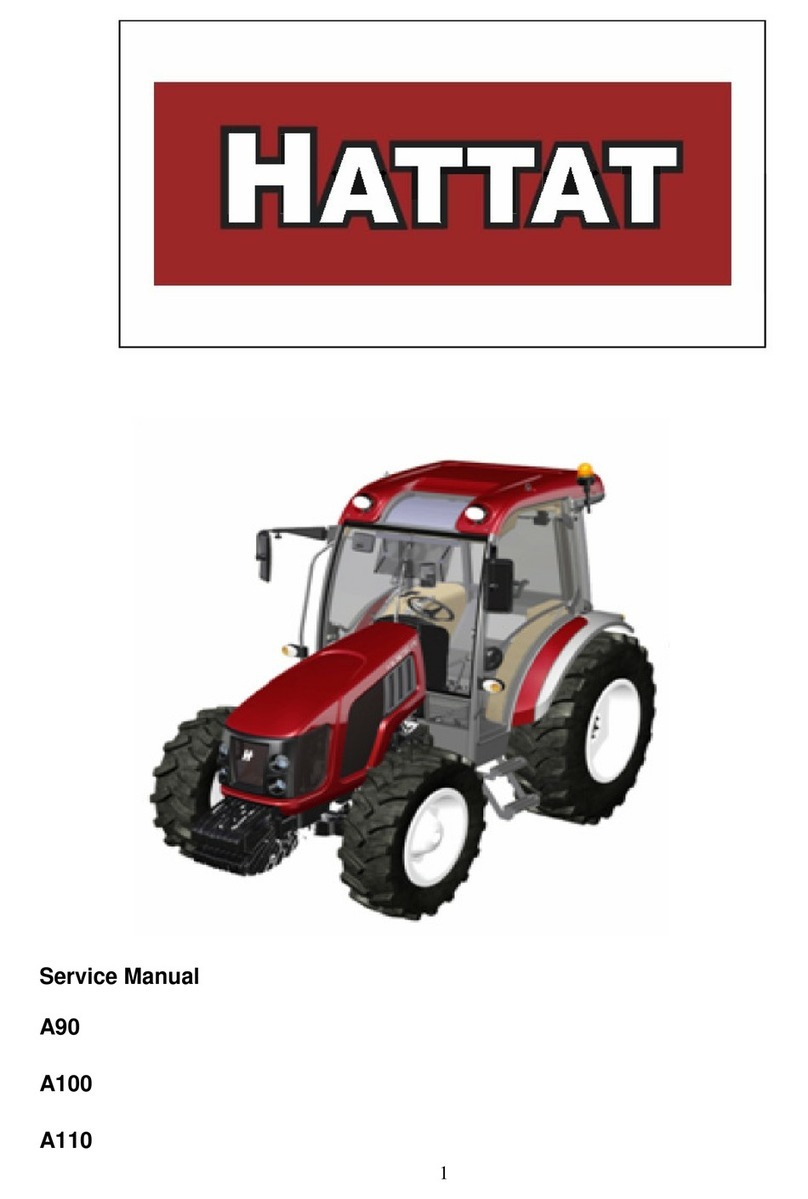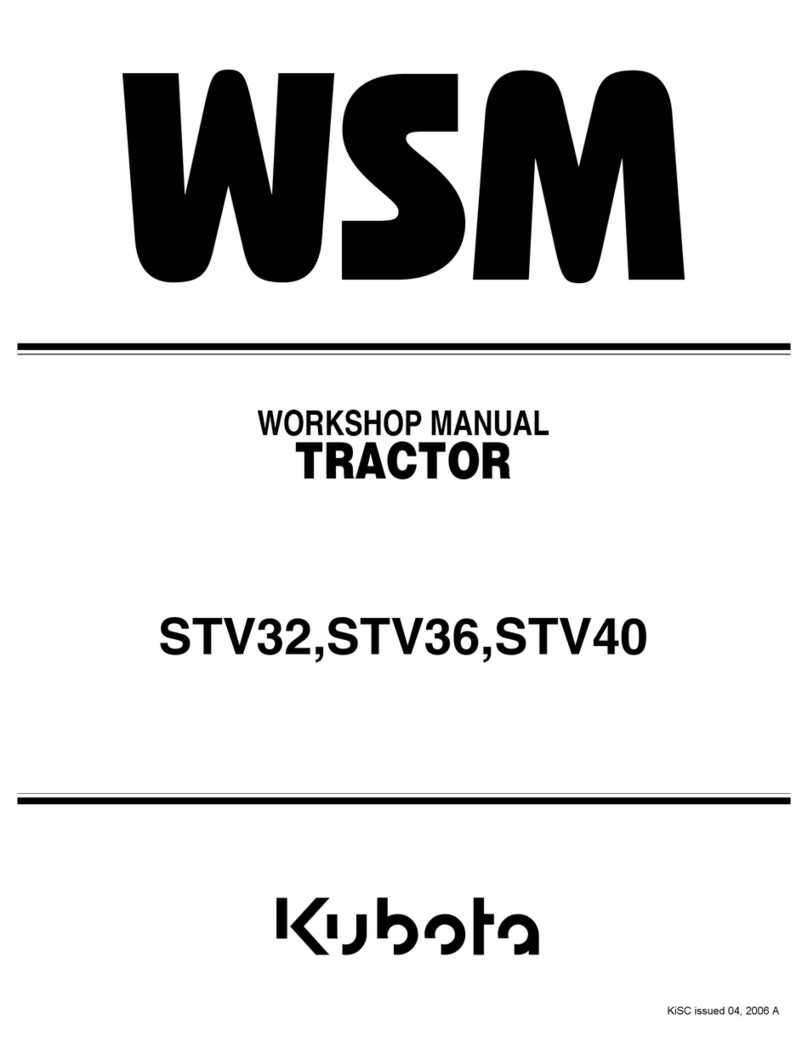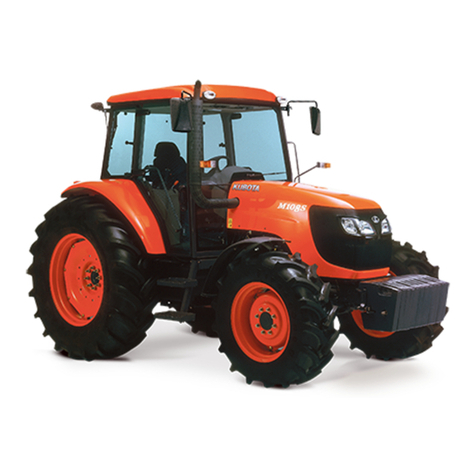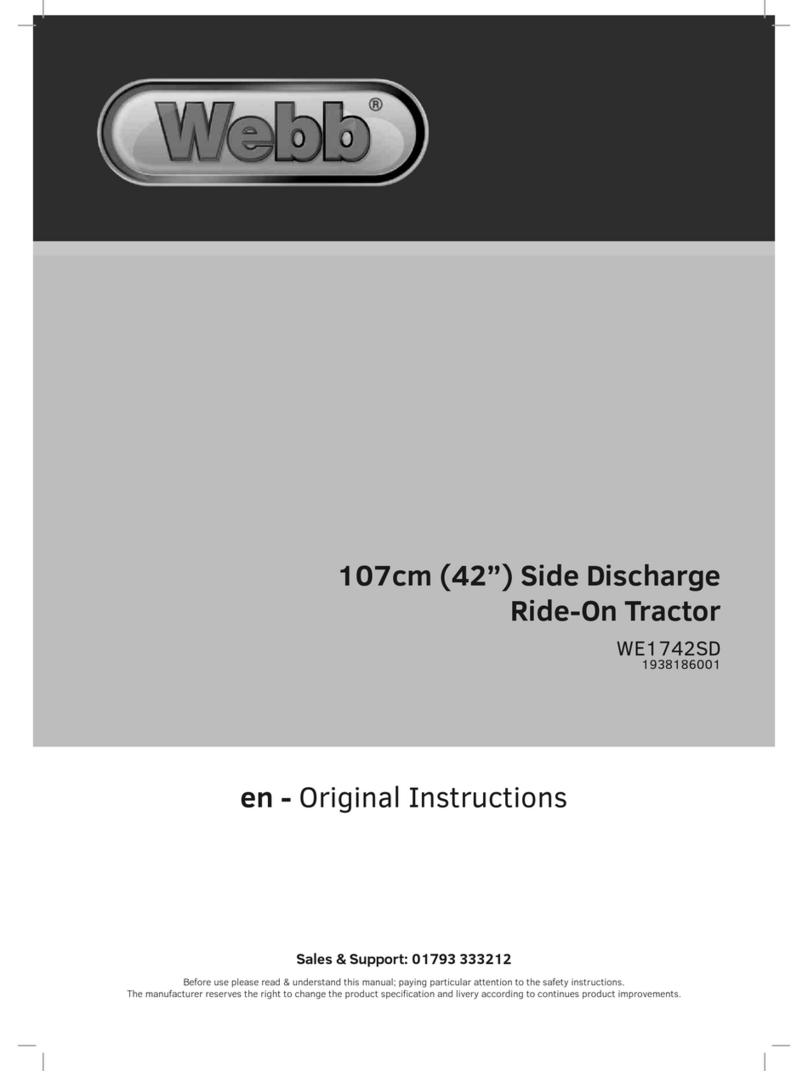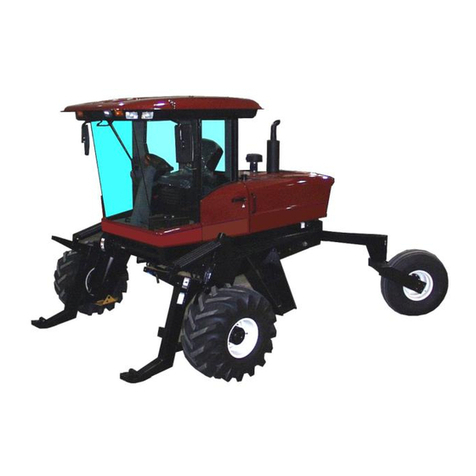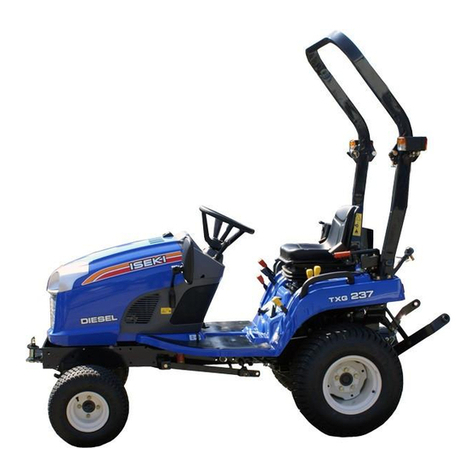
Contents
Safety . . . . . . . . . . . . . . . . . . . . . . . . . . . . . . . . . . . . . . . . . . . . . . . . . . . . . . . . . . . . . . . . . . . . . . . 4
General Machine Safety W arnings . . . . . . . . . . . . . . . . . . . . . . 4
Lawn Mower Safety W arnings . . . . . . . . . . . . . . . . . . . . . . . . . . . . 5
Additional Safety Messages . . . . . . . . . . . . . . . . . . . . . . . . . . . . . . . 6
Safety and Instructional Decals . . . . . . . . . . . . . . . . . . . . . . . . . . 7
Setup . . . . . . . . . . . . . . . . . . . . . . . . . . . . . . . . . . . . . . . . . . . . . . . . . . . . . . . . . . . . . . . . . . . . . . . 1 1
1 Installing the Roll Bar . . . . . . . . . . . . . . . . . . . . . . . . . . . . . . . . . . . . . 12
2 Installing the Seat . . . . . . . . . . . . . . . . . . . . . . . . . . . . . . . . . . . . . . . . . . 12
3 Installing the Service Decal . . . . . . . . . . . . . . . . . . . . . . . . . . . . 12
4 Installing the Steering Wheel . . . . . . . . . . . . . . . . . . . . . . . . . . 13
5 Installing the Grass-Basket Hooks . . . . . . . . . . . . . . . . . 13
6 Installing the Cutting Units . . . . . . . . . . . . . . . . . . . . . . . . . . . . . . 13
7 Connecting the Main-Power
Connectors . . . . . . . . . . . . . . . . . . . . . . . . . . . . . . . . . . . . . . . . . . . . . . . . . . . 14
8 Adjusting the Machine Settings . . . . . . . . . . . . . . . . . . . . . . 15
9 Adding Rear W eight . . . . . . . . . . . . . . . . . . . . . . . . . . . . . . . . . . . . . . . 15
10 Installing the CE/UKCA Decals . . . . . . . . . . . . . . . . . . . . 15
1 1 Reducing the T ire Pressure . . . . . . . . . . . . . . . . . . . . . . . . . . 16
12 Mounting the Battery Charger on a
W all . . . . . . . . . . . . . . . . . . . . . . . . . . . . . . . . . . . . . . . . . . . . . . . . . . . . . . . . . . . . . . . 16
13 Charging the Batteries . . . . . . . . . . . . . . . . . . . . . . . . . . . . . . . . . 16
Product Overview . . . . . . . . . . . . . . . . . . . . . . . . . . . . . . . . . . . . . . . . . . . . . . . . . . . 17
Controls . . . . . . . . . . . . . . . . . . . . . . . . . . . . . . . . . . . . . . . . . . . . . . . . . . . . . . . . . . . 17
InfoCenter . . . . . . . . . . . . . . . . . . . . . . . . . . . . . . . . . . . . . . . . . . . . . . . . . . . . . 19
Specications . . . . . . . . . . . . . . . . . . . . . . . . . . . . . . . . . . . . . . . . . . . . . . . . . . 23
Attachments/Accessories . . . . . . . . . . . . . . . . . . . . . . . . . . . . . . . . . 24
Before Operation . . . . . . . . . . . . . . . . . . . . . . . . . . . . . . . . . . . . . . . . . . . . . . . . . 25
Before Operation Safety . . . . . . . . . . . . . . . . . . . . . . . . . . . . . . . . . . . 25
Identifying the Cutting Units . . . . . . . . . . . . . . . . . . . . . . . . . . . . . . 25
Using the InfoCenter to Adjust the Machine
Settings . . . . . . . . . . . . . . . . . . . . . . . . . . . . . . . . . . . . . . . . . . . . . . . . . . . . . . . . . 25
Understanding the InfoCenter Dialog
Messages . . . . . . . . . . . . . . . . . . . . . . . . . . . . . . . . . . . . . . . . . . . . . . . . . . . . . 28
T ilting the Steering Wheel . . . . . . . . . . . . . . . . . . . . . . . . . . . . . . . . . 28
Performing Daily Maintenance . . . . . . . . . . . . . . . . . . . . . . . . . . 29
During Operation . . . . . . . . . . . . . . . . . . . . . . . . . . . . . . . . . . . . . . . . . . . . . . . . . 29
During Operation Safety . . . . . . . . . . . . . . . . . . . . . . . . . . . . . . . . . . . 29
Breaking in the Machine . . . . . . . . . . . . . . . . . . . . . . . . . . . . . . . . . . . 30
T urning On the Machine . . . . . . . . . . . . . . . . . . . . . . . . . . . . . . . . . . . . 30
Checking the Machine after T urning On the
Machine . . . . . . . . . . . . . . . . . . . . . . . . . . . . . . . . . . . . . . . . . . . . . . . . . . . . . . . . 30
Understanding the Safety-Interlock
System . . . . . . . . . . . . . . . . . . . . . . . . . . . . . . . . . . . . . . . . . . . . . . . . . . . . . . . . . . 30
Driving the Machine without Mowing . . . . . . . . . . . . . . . . . 31
Mowing the Green . . . . . . . . . . . . . . . . . . . . . . . . . . . . . . . . . . . . . . . . . . . . 31
Monitoring the Battery-System Charge
Level . . . . . . . . . . . . . . . . . . . . . . . . . . . . . . . . . . . . . . . . . . . . . . . . . . . . . . . . . . . . . 33
Shutting Of f the Machine . . . . . . . . . . . . . . . . . . . . . . . . . . . . . . . . . . 33
After Operation . . . . . . . . . . . . . . . . . . . . . . . . . . . . . . . . . . . . . . . . . . . . . . . . . . . . 33
After Operation Safety . . . . . . . . . . . . . . . . . . . . . . . . . . . . . . . . . . . . . . 33
Inspecting and Cleaning after Mowing . . . . . . . . . . . . . . 35
Hauling the Machine . . . . . . . . . . . . . . . . . . . . . . . . . . . . . . . . . . . . . . . . . 35
T owing the Machine . . . . . . . . . . . . . . . . . . . . . . . . . . . . . . . . . . . . . . . . . . 36
Maintaining the Lithium-Ion Batteries . . . . . . . . . . . . . . . . 37
T ransporting the Lithium-Ion Batteries . . . . . . . . . . . . . . 37
Understanding the Lithium-Ion Battery
Charger . . . . . . . . . . . . . . . . . . . . . . . . . . . . . . . . . . . . . . . . . . . . . . . . . . . . . . . . . 38
Maintenance . . . . . . . . . . . . . . . . . . . . . . . . . . . . . . . . . . . . . . . . . . . . . . . . . . . . . . . . . . . 40
Maintenance Safety . . . . . . . . . . . . . . . . . . . . . . . . . . . . . . . . . . . . . . . . . . 40
Recommended Maintenance Schedule(s) . . . . . . . . . . . 40
Daily Maintenance Checklist . . . . . . . . . . . . . . . . . . . . . . . . . . . . . 41
Pre-Maintenance Procedures . . . . . . . . . . . . . . . . . . . . . . . . . . . . . . 41
Raising the Machine . . . . . . . . . . . . . . . . . . . . . . . . . . . . . . . . . . . . . . . . . 41
Raising the Hood . . . . . . . . . . . . . . . . . . . . . . . . . . . . . . . . . . . . . . . . . . . . . . 43
Electrical System Maintenance . . . . . . . . . . . . . . . . . . . . . . . . . . . 43
Electrical System Safety . . . . . . . . . . . . . . . . . . . . . . . . . . . . . . . . . . . 43
Disconnecting or Connecting Power to the
Machine . . . . . . . . . . . . . . . . . . . . . . . . . . . . . . . . . . . . . . . . . . . . . . . . . . . . . . . . 43
Locating the Fuses . . . . . . . . . . . . . . . . . . . . . . . . . . . . . . . . . . . . . . . . . . . 44
Servicing the Batteries . . . . . . . . . . . . . . . . . . . . . . . . . . . . . . . . . . . . . . 46
Maintaining the Battery Charger . . . . . . . . . . . . . . . . . . . . . . . 46
Drive System Maintenance . . . . . . . . . . . . . . . . . . . . . . . . . . . . . . . . . . 47
Checking the T ire Pressure . . . . . . . . . . . . . . . . . . . . . . . . . . . . . . . 47
Checking the T orque of the Wheel
Nuts .............................................................. 47
Changing the T raction-Motor-Gearbox
Fluid .............................................................. 47
Brake Maintenance . . . . . . . . . . . . . . . . . . . . . . . . . . . . . . . . . . . . . . . . . . . . . 49
Adjusting the Brakes . . . . . . . . . . . . . . . . . . . . . . . . . . . . . . . . . . . . . . . . . 49
Cutting Unit Maintenance . . . . . . . . . . . . . . . . . . . . . . . . . . . . . . . . . . . . . 49
Blade Safety . . . . . . . . . . . . . . . . . . . . . . . . . . . . . . . . . . . . . . . . . . . . . . . . . . . . . 49
Installing and Removing the Cutting
Units .............................................................. 49
Checking the Reel-to-Bedknife Contact . . . . . . . . . . . . 52
Backlapping the Cutting Units . . . . . . . . . . . . . . . . . . . . . . . . . . . 52
Storage . . . . . . . . . . . . . . . . . . . . . . . . . . . . . . . . . . . . . . . . . . . . . . . . . . . . . . . . . . . . . . . . . . . 53
Storage Safety . . . . . . . . . . . . . . . . . . . . . . . . . . . . . . . . . . . . . . . . . . . . . . . . . . 53
Preparing the Machine for Storage . . . . . . . . . . . . . . . . . . . 53
Battery Storage Requirements . . . . . . . . . . . . . . . . . . . . . . . . . 53
Storing the Charger . . . . . . . . . . . . . . . . . . . . . . . . . . . . . . . . . . . . . . . . . . 54
3
